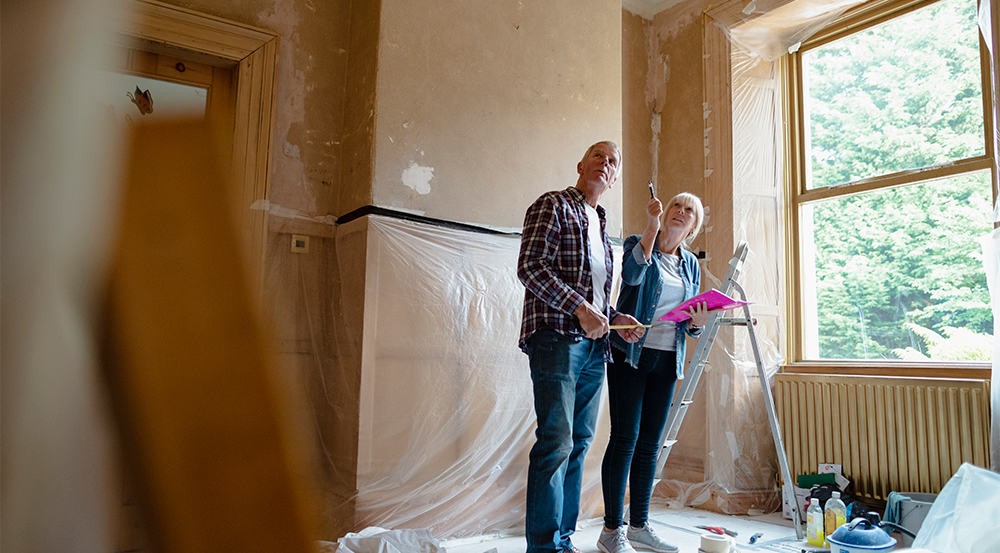Dreaming of a brand new home? You have a few routes available to you. You can look for a vacant block of land, buy a house-and-land package, or buy an existing property to knock down and rebuild.
Each option has its advantages. House-and-land packages offer certainty of price, and you can often choose from multiple options.
However, if location and lifestyle are your focus, a knockdown-rebuild may be the way to go.
As the old adage goes, they aren’t making any more land. Especially in inner city suburbs and other desirable locations, the chances of finding a vacant block are close to zero. In this case, the smart strategy is to look for an older, dilapidated property where most of the value is in the land, knock it down, and rebuild something new. You may even choose to knock down your current home if you like where you live.
This approach means you can build in an established area, with infrastructure and amenities already in place. Additionally, the land will already be cleared and levelled, with mains services attached.
What to keep in mind
Council approval
Just because a council has approved a house on the block in the past doesn’t mean they’ll give you carte blanche to build a new one.
You’ll generally need a demolition permit to do the knockdown. If the property is heritage protected, you may not be able to knock it down at all, so this should be the first thing you check. In some instances, you can knock down a substantial amount of the building as long as a heritage facade is preserved, while other buildings are completely protected.
If there are no protections, a demolition permit typically takes a few weeks to obtain.
You’ll also need to get building approval for the proposed new design.
Even if the new house is a similar size and height to the old one, you may not get the green light. Council rules change regularly. New builds in high-risk bushfire zones, for example, are required to have safety features that didn’t previously exist. Flood-prone areas now often require homes to be built on bearers and joists instead of a concrete slab.
Height limits, regulations around carports, boundary setbacks, floor space ratios and landscaping requirements are just some of the things that may have changed since the last home was built.
You can research your local council regulations online or go and have a chat to a planning officer. Plan for a three-four month delay in obtaining all the approvals you need.
Asbestos
Asbestos was widely used as a building material from around 1920 right up to the 1990s. If you’re knocking down an older home, you’ll need to find out if the building contains asbestos. This should be disclosed in the vendor statement when you buy. However, even if there is no disclosure, it’s strongly recommended to get a site inspection and find out for yourself.
Asbestos removal is a specialised service. Each element that contains asbestos must be removed, wrapped and disposed of in accordance with legislation. Accordingly, it’s not cheap. Asbestos removal can add $20,000 or even more to the price of your demolition.
Budget
Building a new home, no matter whether you do it as a knockdown and rebuild or as a house and land package can be costly. You have to pay to live somewhere else while the house is built, so you’re often servicing two mortgages or a mortgage and rent simultaneously. If you’re an investor, you can’t charge rent on the vacant land.
Of the two options, a knockdown and rebuild is often the more expensive. It’s also less certain what the final price will be. A house and land package often comes with a fixed price guarantee. With a knockdown, you never know what you might find.
If you do find that there is remediation work to be done, or asbestos in the build, those can add time and money to the build. You’ll also need to budget for things like traffic control while you have trucks onsite, and possibly temporary power poles. Experts advise that you should always have at least 10% over the planned budget for such contingencies.
On the other hand, a knockdown does give you more flexibility. Assuming that the original house isn’t condemned, you can live in it or rent it out for a few years while you pay down some of the mortgage and save up for the new build. If most of the value of the purchase is in the land, you will also be able to build equity — making it easier to obtain additional finance down the track.
Once completed, your new house is likely to reward you richly. A new build in an established, desirable suburb is an excellent candidate for strong capital growth. And best of all, it’ll offer you a family home for decades to come.
